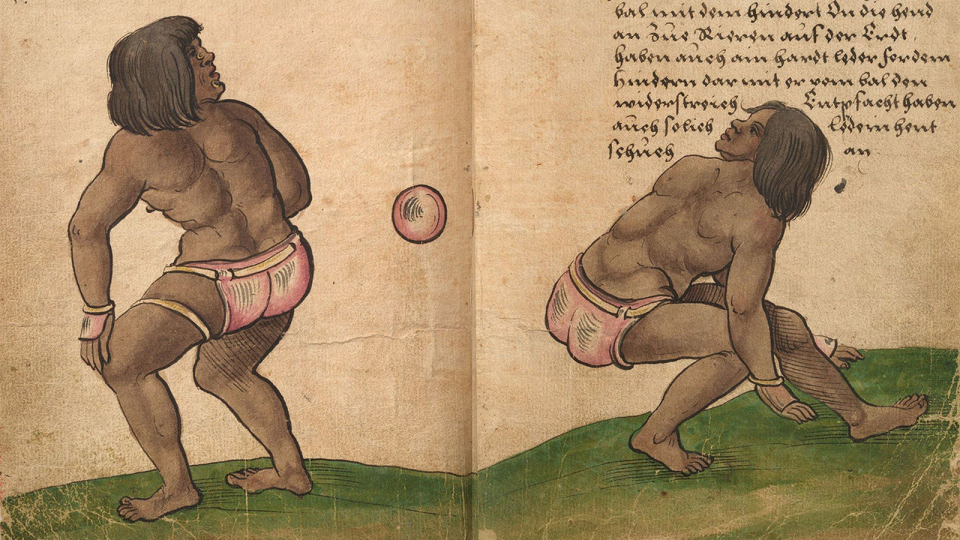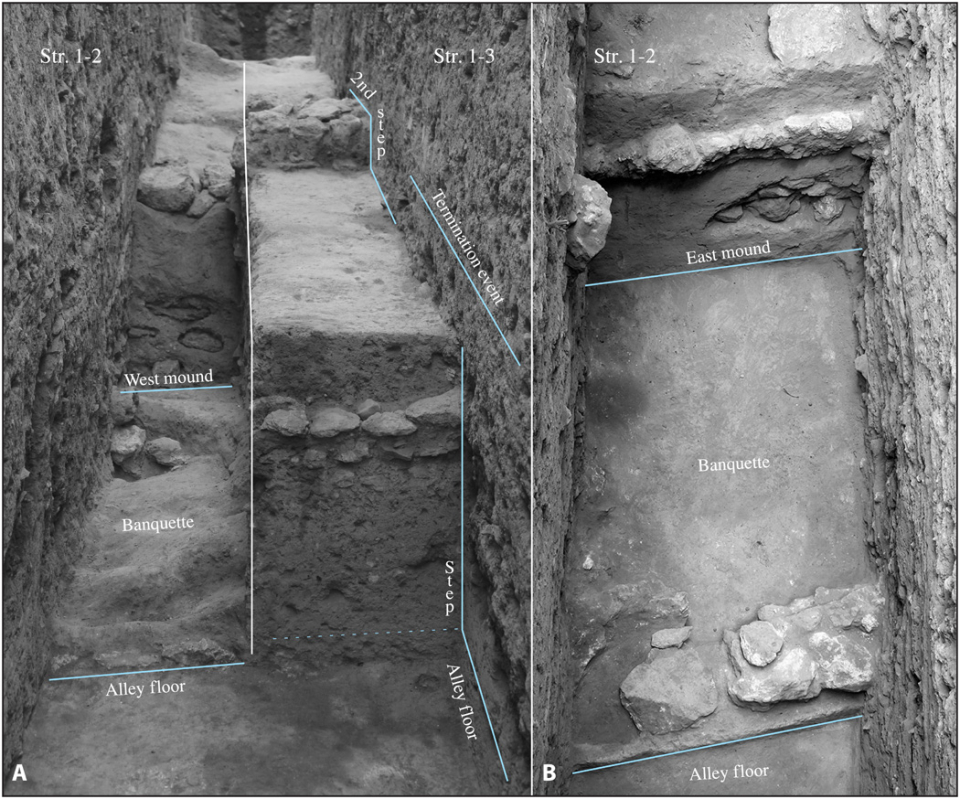The Etlatongo court existed during a transformative time in Mesoamerica, when the region’s first political and religious leaders emerged and trade between regions ramped up. “It’s the period when what we think of Mesoamerican culture begins,” Salazar Chávez says. The game would have helped strengthen alliances and trade between communities by bringing different teams together, and also given budding leaders a chance to flaunt their power and wealth by hosting feasts. The new phenomenon of inequality could have been reinforced by who was given the best positions on the courtside mounds to watch the game, Blomster says.
Shoring up the evidence for a ball court at Etlatongo are figurines found in the earth now on top of the ancient court. The human figures are wearing padded belts, a necessary piece of equipment for hitting heavy rubber balls with your hips. Similar figurines have been found at Mesoamerica’s first city, called San Lorenzo, which flourished on Mexico’s gulf coast between 1400 and 1000 B.C.E.
Blomster, Jeffrey P., and Víctor E. Salazar Chávez. "Origins of the Mesoamerican ballgame: Earliest ballcourt from the highlands found at Etlatongo, Oaxaca, Mexico." Science Advances 6, no. 11 (2020): eaay6964, DOI: 10.1126/sciadv.aay6964.
The ballgame represents one of the most enduring and iconic features of ancient Mesoamerican civilization, yet its origins and evolution remain poorly understood, primarily associated with the Gulf Coast and southern Pacific coastal lowlands. While one early ballcourt dates to 1650 BCE from the Chiapas lowlands, ballcourts have remained undocumented in the Mesoamerican highlands until a millennium later, suggesting less involvement by highland civilizations in the ballgame’s evolution. We provide new data from the southern highlands of Mexico, from the Early Formative period (1500–1000 BCE), that necessitate revising previous paradigms. Along with ballplayer imagery, we recently excavated the earliest highland Mesoamerican ballcourt, dating to 1374 BCE, at the site of Etlatongo, in the Mixtec region of Oaxaca. We conclude that Early Formative highland villagers played an important role in the origins of the formal Mesoamerican ballgame, which later evolved into a crucial component of subsequent states.

